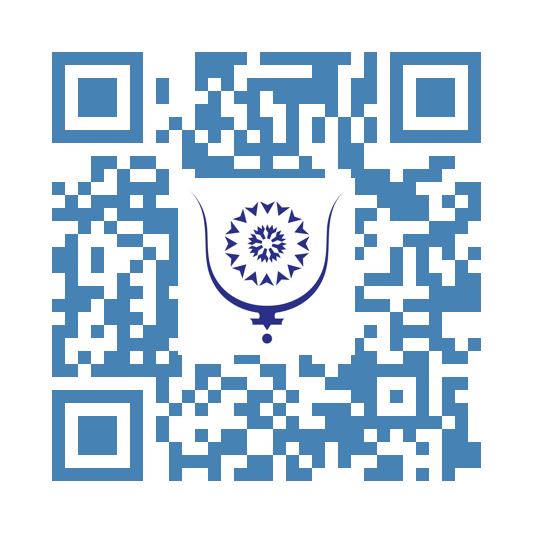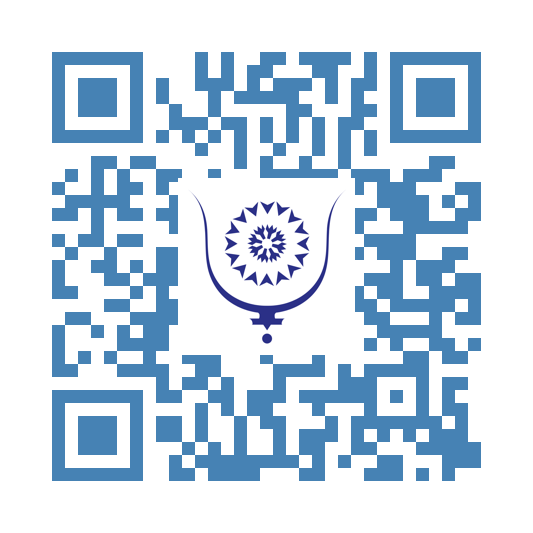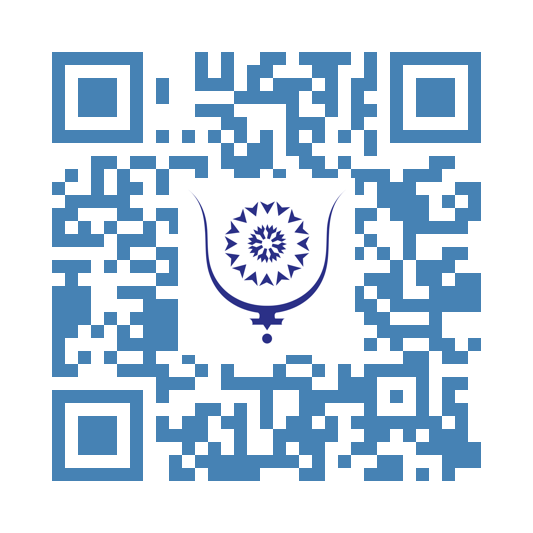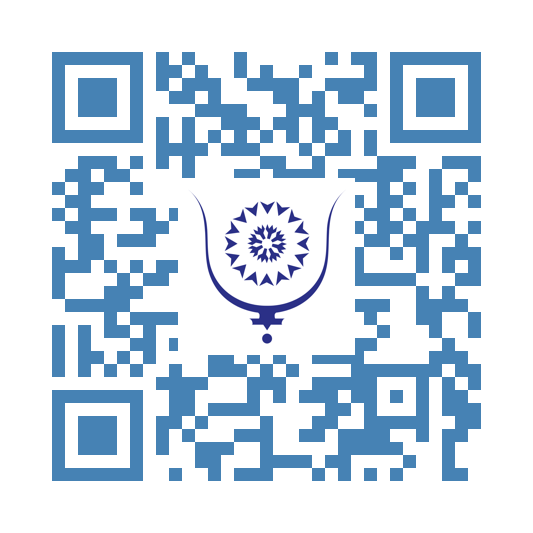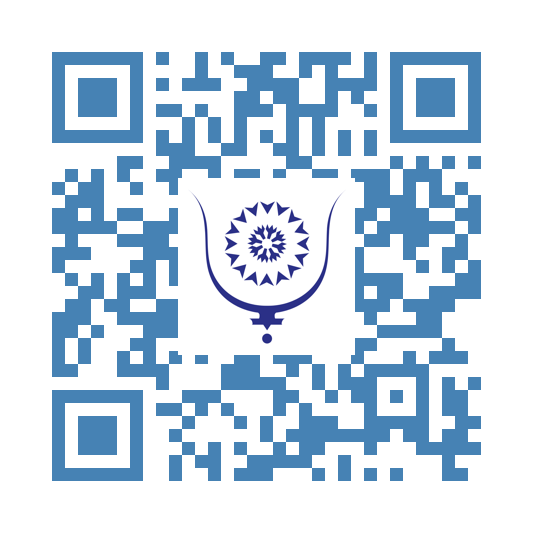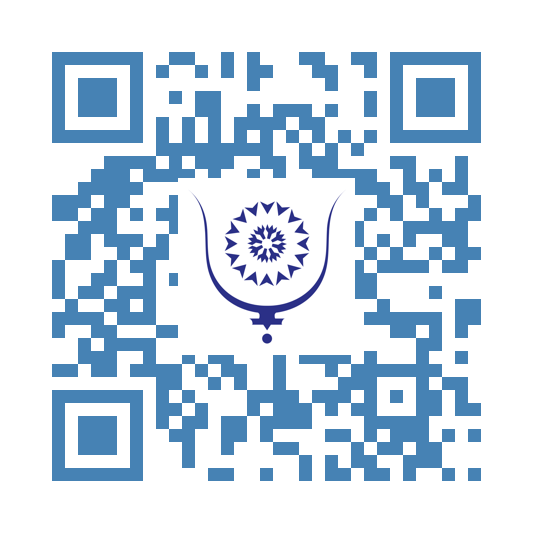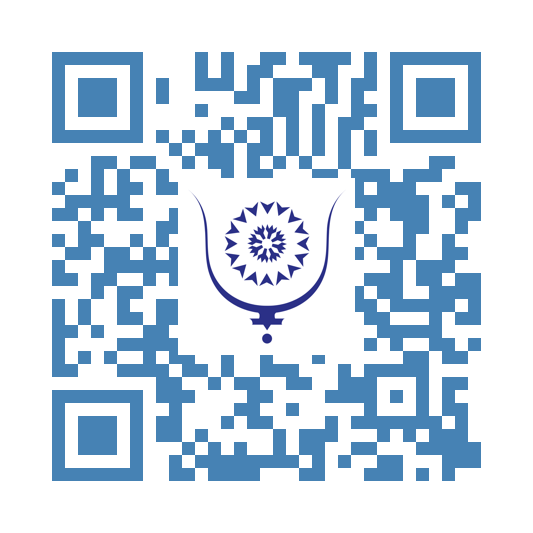Historic turning point with the transfer of 2.5 million archive documents to Rabat, a source of concern for Algeria
President Macron's visit to Morocco has been repeatedly postponed for a variety of reasons. While many saw the visit as a stalemate in a serious and insoluble situation, time has shown otherwise. In view of recent developments, rather than speaking of successive deep crises, it would be better today to speak of a beneficial and productive halt, since it enabled us to set the record straight, clarify the situation on both sides, make clear the positions of each party on the issues that concern it, and dispel certain latent difficulties that in fact haunted both parties.
The hope now is to see the locomotive and wagons of complementarity on the rails, in a spirit of mutual respect and common interests, with the most absolute programmatic and the most profitable perspective for both parties.
In this context, one of the issues that has been outstanding between the two countries for decades is that of the archives concerning Morocco, in particular those from the protectorate period and slightly earlier. In other words, documents from the time when France began to take an interest in Morocco. For a long time, and right up to the 'post' recent crisis, France had always pretended not to hear Morocco's claims to the paternity of its archives, even though they concerned it directly.
In fact, France, in its balancing act, seeking to remain halfway between Algeria and Morocco, didn't think it productive to deliver such a treasure trove of information to the Kingdom, without it casting a shadow over its relations with its former departments; a rather relative equidistance, since the former colonial power has acted more to Algeria's advantage, for historically obvious and understandable reasons. However, France has never shown any consideration for this position, which is perceived as unfair by Rabat.
Clearly, these archives are of capital importance for Morocco, as they concern its history and, above all, its geography prior to the colonization of its South by Spain, the despoiling of its East by France, the attachment of some of its provinces to Algeria and the division of the rest of its territory into strata, again between France and Spain. In fact, the Cherifian Empire had been stripped, no doubt with a view to weakening it forever.
Now that the cold period between the two countries is over, the thorny issue of archives will be brought to the table, leading to an agreement that will enable the Cherifian Kingdom to recover more than two and a half million documents. The boxes that will be handed over to Morocco will undoubtedly be of real use and will have a major impact on the future of its foreign policy. They will undoubtedly weigh heavily in its relations with its neighbors.
My friend MH has just devoted a most pertinent reflection to the question, which he has published, as usual, on LinkedIn. With his permission, I'm publishing it here in its entirety. It is essential to read this text to understand what is really at stake in Morocco's insistence on recovering the said archives.
“Morocco and France have just reached a crucial stage in their relations with the signing of an official agreement providing for the transfer of some 2.5 million French archival documents to Rabat.
This development, which follows decades of Moroccan demands, is of major strategic importance. These documents, which contain valuable information on Morocco's historical claims and territorial borders, particularly in areas disputed since the end of the colonial era, reinforce the legitimacy of Moroccan positions.
This transfer of archives concerns in particular illegally occupied territories such as the Eastern Sahara, a region whose sovereignty is at the heart of disputes between Morocco and Algeria. These documents provide historical evidence likely to consolidate Moroccan claims to these territories.
At the meeting which formalized the agreement, Moroccan and French officials stressed the importance of this documentation in resolving territorial disputes and recognizing Morocco's historical rights.
The agreement sent shockwaves through the Algerian regime, which was particularly concerned by the handover of the archives. Algeria, aware of the validity of Morocco's claims, fears that these new historical elements will strengthen Morocco's position in international forums.
For decades, Algerian leaders have sought to deny the legitimacy of Moroccan claims. To conceal these claims and delay any negotiations, Algeria has found no better way than to create a conflict over the Western Sahara. In vain.
This agreement marks a decisive turning point not only in the management of historical disputes between Morocco and France, but also in the regional geopolitical balance. It is seen by many as an implicit recognition by France of the importance of the historical context in contemporary territorial claims. The handover of these documents to Rabat, after decades of claims, represents a major blow to the Algerian regime, whose positions are increasingly weakened in the face of a historical truth that is now accessible and indisputable.
Morocco, thanks to this agreement, strengthens its means of defense on the international stage, while Algeria, faced with a delicate situation, could see its arguments crumble in the face of irrefutable archival evidence. This transfer of archives is not only a diplomatic victory for Morocco, but also an act that sheds light on the historical injustices committed during the colonial period and the legitimate claims arising from them.”
Now that's been said, but above all, it's an eminently political gesture to return such archives, knowing the powerful impact this will inevitably have, namely on the geostrategy of the region. France knows it, Morocco knows it. As for Algeria, it has only its eyes to cry and, above all, to pull itself together and, why not, abandon the headlong rush that has characterized its day-to-day actions for a long time now....
Share:
Historic turning point with the transfer of 2.5 million archive documents to Rabat, a source of concern for Algeria
copy:
https://bluwr.com/p/44470274
Enough Already! Part Two
... If Ruiz were still alive, maybe she’d cite, ‘Alternative Stats’.
The calls to ban Kenya from international athletics are getting more and more strident. But Kenya is neither East Germany nor Russia, where is has been conclusively proven that doping was/is state-aided and directed. This is freelance cheating. The Kenyan federation and politicians try to blame the ‘colonising’ agents and managers. But as one leading agent suggested to me last year, the incentives in the third world are far higher. One hundred thousand dollars is the equivalent of a life’s work compared to, say, a year or two’s salary to a first world athlete.
The delayed disqualification of numerous Olympic and world champions, via retroactive tests is bad enough; but frequently bypasses public scrutiny. However, the reaction to Chepngetich’s run – widespread disbelief and ridicule - suggests that this may be some sort of watershed. There are those, and I’m not far behind, if at all, who believe that there are few if no legitimate world records in athletics.
And if we can’t beat them, maybe we should join them?
Maybe it’s time to declare open house; just let the dopers get on with it, and we enjoy the spectacle? After all, sport is often a surrogate target, an excuse to ignore the greater ills of society. In reality, what is a doping offence in contrast to corporate theft, fomenting an insurrection or committing genocide?
* I dedicate this column to the British restaurant writer, Jay Rayner (who happens to be Jewish) who, within days of the Israeli assault on Gaza a year ago, had the courage to use his weekly column in the Observer to call out the overkill. He followed up with an even more accusatory piece a few weeks later.
Share:
Enough Already! Part Two
copy:
https://bluwr.com/p/42613455
Enough Already!
Kenyan athletics is like Binyamin Netanyahu – completely out of control! I make no excuses for the comparison. Sometimes we pay too much attention to our daily diversions – bread and circuses - and not enough to the grotesque injustices being perpetrated by people like the Israeli prime minister who appears to be prolonging his genocidal invasion of Gaza and Lebanon for the sole purpose of saving his own skin. Forget that he’s probably a crook, likely to be jailed for financial malfeasance when the dust settles. What he certainly is is a war criminal. Of course, the Hamas incursion and slaughter of October 7, 2023 was disgusting and disgraceful. But the biblical vengeance visited on the largely innocent population of Gaza (and now, Lebanon) by the Israeli Defence Force under the command of Netanyahu is an affront to humanity. And western governments (and media), informed by Joe Biden’s fetishist attachment to Israel, are complicit in this. Hopefully, when the humanitarian hiatus occasioned by the run-up to the US Presidential election is over, with the fervent hope that sanity prevails there, and Kamala Harris rather than the mentally ill Donald Trump wins, there will be a move to a cease-fire in the Middle East; and ultimately, an honest attempt at a two-state solution.
And so to the footnote which is the qualified shock of witnessing a woman, Ruth Chepngetich run 2.09.56 at the Chicago Marathon last Sunday. The qualification is that she is Kenyan, and suspicion if not guilt by association is overwhelming. The tally of Kenyan dopers runs into hundreds. Despite her credentials, previous fast(ish) marathons, a world title, plenty of victories and a rep for going out too fast, with the corollary that one day (last Sunday?), she wouldn’t fold and would do something truly extraordinary ultimately still doesn’t stack up to the mountain of beans that points to sub-2.10. And the plea that she has never tested positive doesn’t cut it either. There are plenty of culprits like that; take Marion Jones, for starters!
The excitement generated by the scintillating running of Kipchoge Keino and his colleagues and successors from the 1960s through the final decades of the last century, seen as some sort of manifestation of third world innocence has evaporated in the last 20 years with each successive announcement of a doping positive from this former Eden. When the use of EPO and its derivatives became widespread 30 years ago, the spectre of its use by East Africans – already benefitting from birth, nurturing and training at altitude, a recognised advantage in distance running – was invoked; and largely laughed off. Kenyans (and Ethiopians) won’t even taker an aspirin was the response.
Since the turn of the millennium, and increasingly during the last decade, scores of Kenyans have tested positive for performance enhancers; the tally is now over a hundred suspensions in the last couple of years alone. There are those who think this is some sort of vindication of the Kenyan testing programme when it is more likely to be lack of sophistication of the druggies compared to, say first world practitioners. And the Kenyan testing programme is far superior to the one in Ethiopia.
Much has been made of Chepngetich’s age, that she is too old for such a performance at 30; but Carlos Lopes won the 1984 Olympic marathon at 37, and set a world record the following year. Constantina Dita went one better and won the 2008 Olympic gold at 38. Lopes’ record incidentally was 2.07.12, just over two and a half minutes faster than Chepngetich. But there’s been a lot of (super)shoe leather worn out on the road in the 39 years since then; and doubtless, more sophisticated means of doping. There has also been a reappraisal of training for the marathon.
My long-time friend from back home in the Black Country, Jim Harvey, a successful coach in New England for the last four decades, writes, ‘The current trend is for elite marathon runners to be specialist in that one event. Traditionally Western elite athletes would compete on the track and when they had maxed out at 10,000m move up the distance to the marathon. Their preparation was often 10K training which was tweaked by adding distance to their long run and more duration to their tempo runs. Today top African runners often bypass track completely and focus on half marathon/marathon from the onset of their careers. Training for the elites has become more marathon-specific with long segments of the long run done at marathon or half marathon pace, depending on the duration of the effort. Also, the interval workouts contain longer repetitions off a short or float recovery with total volume often being up around 20K. The aim is to obtain relaxation at a fast sustained pace for a long duration and this can only be accomplished by practice in training.’
That transition probably began after the ten year hiatus in men’s world records, between Belayneh Dinsamo’s 2.06.50 in Rotterdam 1988 and Ronaldo da Costa’s 2.06.05 in Berlin 1998. After that, the floodgates opened, and records tumbled, down to the current (equally unfeasible?) 2.00.35 by the tragically dead Kelvin Kiptum of Kenya a year ago, also in Chicago.
When Almaz Ayana took the 10,000 metres world record apart in Rio 2016, I suggested (in her defence) that women’s long distance running was going through a similar transition and was still decades behind the men, ie going through a development like when Ron Clarke took 39 seconds off the men’s record in 1965. On reflection, I’m not so sure. The more so since, in succession, Sifan Hassan, Letesenbet Gidey and Beatrice Chebet (all of East African provenance) have taken chunks off, such that the record is now 28.54.14, almost half a minute faster than Ayana. And, to be even-handed, Paula Radcliffe’s 2.15.25 in 2003 was widely if more quietly disparaged. A friend of mine, a former 4min 10sec 1500 metres woman turned coach told me Radcliffe’s time was unlikely if not impossible without recourse to PEDs, and she’s Russian; so I figured if anyone was going to know…?
The incredulity which accompanies all these runs means that the perception of long distance running feats has moved from the middle of the high road to the gutter.
Because even with the shoes, the training and the inevitable march of progress, the caveats cannot dispel the suspicions. Those of us who have been lifetime runners and follow the sport assiduously will doubtless feel the same as my illustrious colleague, former Boston winner Amby Burfoot who has already written a very measured but equally condemnatory piece about Chepngetich, citing the 1980 Boston Marathon cheat Rosie Ruiz, ‘We runners all knew immediately that she was a fraud. We had no proof, but we knew’. If you don’t know the tale, briefly, a plumpish Ruiz started the race, dropped out shortly afterwards, took a metro to a mile or so from the finish, re-joined the race and jogged in the ‘winner’. It took a week to unmask her...
Share:
Enough Already!
copy:
https://bluwr.com/p/42612349
Two Nobel Prizes: AI is Still resting on Giant Shoulders
John Hopfield and Geoffrey Hinton got the Nobel Prize of Physics, Demis Hassabis and John Jumper the nobel Prize of Chemistry. It is obvious that the first Nobel Prize was not given merely for their contributions to physics, but mostly for their profound and foundational contributions to what is today modern AI.
Let's talk about the second Nobel prize.
AlphaFold was put on map by beating other methods on a competition (CASP14/CASP15) that has been running for year on a well established dataset. As such, AlphaFold winning is more like an ImageNet moment (when the team of Geof Hinton demonstrated the superiority of Convolutional Networks on Image Classification), than a triumph of multi-disciplinary AI research.
The dataset of Alphafold rests on many years of slow and arduous research to compile a dataset in a format that could be understood not by machines, but by computer scientists. This massive problem of finding the protein structure was, through that humongous work, reduced to a simple question of minimizing distances. A problem that could now be tackled with little to no knowledge of chemistry, biology or proteomics.
This in no way reduces the profond impact of AlphaFold. However it does highlight a major issue in applied AI: computer scientists, not AI, are still reliant on other disciplines to drastically simplify complex problems for them. The contributions and hard work required to do so gets unfortunately forgotten everything has been reduced to a dataset and a competition.
What to do when we do not have problems that computer scientists can easily understand? This is true for all fields that require a very high level of domain knowledge. Through experience, I came to consider the pairing of AI specialists with specialists of other disciplines, a sub-optimal strategy at best. The Billions of dollars invested in such enterprises have failed to produce any significant return on investment.
The number one blind spot of these endeavours is the supply chain, it usually takes years and looks like this:
1- Domain specialists identify a question
2- Years are spent to develop methods to measure and tackle it
3- The methods are made cheaper
4- The missing links: Computational chemists, Bioinformaticians, ... start the work on what will become the dataset
5- AI can finally enter the scene
Point number (1) is the foundation. You can measure and ask an infinite number of questions about anything. Finding the most important one is not as obvious as it seems. For example, it is not at all obvious that a protein structure is an important feature a priory. Another example, is debugging code. A successful debugging session involves asking and answering a succession of relevant questions. Imagine giving a code to someone with no programming experience and asking them to debug it. The probabilities of them asking the right questions is very close to 0.
Identifying what is important is called inserting inductive Biases. In theory LLMs could integrate the inductive biases of a field and generate interesting questions, even format datasets from open-source data. However until this ability has been fully demonstrated, the only cost efficient way to accelerate AI driven scientific discoveries is to build the disciplinarily into the people: AI Researchers that know enough about the field to be able to identify the relevant questions of the future.
Share:
Two Nobel Prizes: AI is Still resting on Giant Shoulders
copy:
https://bluwr.com/p/39046977
The Sighs of Azemmour
As we were heading towards Walidia, just to enjoy its beautiful lagoon, oysters and fish, my daughter, my wife, and I decided to make a short stop in Azemmour. I had promised myself I woud show my daughter the city as soon as I had the chance.
We are here a stone's throw from Casablanca, a handful of kilometers from El-Jadida and not far from Jorf Lasfar, a pride of the industrialization of modern Morocco.
Personally, I am rather fond of this city. Few are so captivating. I cannot explain why.
There, you can be at times a berber in short Jellaba, tchamir and rounded or pointed toe slippers; sometimes a Phoenician clad in white in the style of the Greeks in their time of glory; sometimes wearing the toga of a proud Roman citizen or the blue turban of a rough Berghouata.
You can daydream about the Portuguese singing their triumph at the capture of the city. You hear, the sound of your steps on an aged pavement, evoking that of the Saadian army taking possession of the city walls. The noise and vociferations of the soldiers resound there again and again; but in silence.
At the turn of an alley of the ancient city, you hear the distant and confused voice of Sidi Abderahman El Mejdoub, wailing his pain in front of evil, questioning the world and the universe. At the turn of a street, you are greeted by the whispering voice, barely audible, of Rabbi Abraham Moul Ness and his prayers at the rising of the sun and its setting Sidi Brahim for Muslims. Religions struggle to find boundaries here...
Moreover, it is a sort of miracle that revealed to the two communities that Abraham was indeed a saint. The citizens had just installed a mill right in front of the cave where he spent his time meditating and praying. The animals that powered the mill quickly fell ill and died one after the other. It was then understood that Abraham did not want to be disturbed in his meditation. Since then, he is Rabbi Abraham for the Jews, Sidi Brahim for the Muslims, holy for both.
Farther inside the city, you can see rather silent young people, looking sullen, crestfallen, who face you at the turn of a lane. Some of those who walk by you look haggard, as though they expressed weariness or disgust; perhaps even deep anger and repeated hurt. At the corner of neighbouring street, on a small shapeless square, it is the jerky sound of a loom that catches your ear. One of the last Deraz still in activity weaves silken or woolen scarves. Tourists like them but do not come often... He works, he loves his job and keeps doing it, waiting for better days to come; or at least hoping that the war in the Middle East stops. Deep down, he must wish that his Israeli friends return to reason and quickly drive out their current leaders; neurotics thirsty for blood more than other thing. He is waiting for the Moussem but does not know if the Jewish Moroccans who return annually for the pilgrimage will still be numerous.
The Arts and Crafts House is silent and expectant too. It spends long spells of time waiting that a small group would pass by to finally enliven it for an hour or so. The master craftsmen who stay there seem to contemplate the passage of time. Their eyes are nostalgic for a recent past certainly idealized, and a more distant past loaded with wealth and power, forever gone.
A lady of a certain age, without any discomfort, dressed in battered pajamas, is there in front of her home, sitting on an stool. The blue door of her modest house, is wide open. The lady is a bit too large for her stool. Her gaze is blank. She does not notice our silhouettes and seems not to hear our involuntarily light steps, as if not to disturb the history or stir the anger of abandoned walls, houses with walled doors, those that time has knocked down and those that passively wait for the signal of the tumbling of tired stones that no longer have anything to hold onto.
Behind the heavy doors of ancient buildings - and there are still many thank God - and some houses not yet walled up or fallen into oblivion of time and humans, we can guess the presence of young girls busying themselves with embroidery. Few are those who still have a passion for this ancestral art specific to the city with its bright colours and dragons. What are dragons doing here, if not recall a past so distant that it fades into the background of history. Some say that it is a Portuguese merchant who introduced this art behind the walls of the city.
At the corner of a small square, as there are many in the city, in front of a small and neglected grocery store, stand idle young men. One of them must look like Mustapha Azemmouri, also called Esteban the Moor or Estevanico. He may even carry his genes. Without Estevanico, North America would never have been what it is now. What a destiny. To leave one country and travel so far, and change the course of history on the other side of the Atlantic Ocean.
Walking out through one of the gates of the ancient city, one only has one thought: Azemmour is looking for a present that does not come. It is dying and dying.
Maybe it is already dead.
Some time ago, Karim Boukhari wrote in an article « I have visited Azemmour. A friend, from the city, warned me: Watch out, he said, it is a dead city. »
Go and walk the promenade around the city walls. An esplanade that my friend Zaki Semlali has laid out with the little he had to revive this special relationship that the city has with river Oum Rebi3. Today, plastic is unfortunately more abundant than fish. Gone are the shad and the beautiful, fleshy ambrines. Some sections of the wall and houses collapse and flow towards the oued like tears of agony.
The nostalgic Azemmour peeks at the Atlantic Ocean and watches, helplessly, the waves smashing in the distance.
I pray the Almighty that this piece of our precious history can finally benefit from the attention of our rulers.
My daughter, my wife, and I left the place sad, wounded in the depths of our souls; but the sublime voice of Sanaa Marahati singing some poems written somewhere in the city makes us hope for a better future for Azemmour.
Share:
The Sighs of Azemmour
copy:
https://bluwr.com/p/31798341
Africa's inescapable awakening must be taken into account as a matter of urgency.
Is the world truly aware of the great changes taking place before our eyes?
Probably yes.
But then what does he do to anticipate them, accompany them, prepare and above all to make them assets of development, peace, harmony and coexistence.
What do we do to combine them in efforts to understand each other, in common strategies, while geopolitics is impacted and is evolving, a little freewheeling anyway?
The answer is unequivocal: not much. Instead, some are trying to save time, some pushing the dust under the carpet and or are just resisting.
For what reason and until’ when?
It is clear that the "dominant powers" do not want to see things evolve differently, no desire to see contexts move other than in the consolidation of their historical, economic and political gains.
For « The up’ until when », the answer is even more complex. Depending on whether one is located north or south, the perspective is different.
The youth of the south, is now more and more qualified, better and better trained, more and more ambitious. It no longer understands things with the defeatist and resigned logic of their elders.
The populations of the south, especially those of ’Afrique, are no longer sensitive to the hollow discourse of revolutionary ideologies, formerly served as a poultice to coax them, or even silence them, while waiting for better days.
Napoleon is attributed in 1816 : « So Let China sleep, because when China S’awaken, the whole world will tremble ». We know since that China is very much awake... and in what way. Alain Peyrefitte predicted it well, in turn.
Funny story, no one has ever said such a thing with regard to Africa.. And yet,’Africa is well out of its sleep... So wait for to get rid of a little.
China, is not much’ in front of’Africa, if not the resurrected legacy of Confucius skillfully combined with a communist pragmatism that nobody’ had imagined.
Africa is much larger, with a larger and constantly growing population. Its young people are lively and enthusiastic. It's the world's largest island, compared with all the other continents.
The so-called ‘dark continent’ has many assets, but it probably also has a few disadvantages that could block or slow down the momentum. We can list them in no particular order: the subservience of certain leaders, a number of failing political regimes, toxic borders inherited from colonialism, endemic corruption encouraged and supported by multinationals and certain Western regimes and their services, and a deeply rooted fatalism.
But Africa is also determinedly dynamic. Travel to the east, west, north or south of the continent and you will see that Africa is in turmoil. Young people are talking, acting, working, innovating; they are doing politics differently and they want to change things. Their aspirations are growing, if not limitless.
Of course, there are still some fools who swear by immigration, but that will soon fade. Growth prospects and the rates already achieved in some countries will change the situation.
Overall, the 54 African countries have understood what is at stake and are increasingly aware of the possibility of imposing themselves and their point of view for the benefit of their young people. Remember the altercation between the President of the DRC and President Macron, or the historic speech by King Mohammed VI on the occasion of Morocco's return to African Unity. (you can find the link to the speech below)
The ambitious ZLEKAF is undoubtedly the most daring response, as are the Nigeria-Morocco gas pipeline, the fertilizer manufacturing platforms, the tunnel project between Morocco and Spain, and the Giga factories that are being set up there, to name but a few.
Two factors determine these trends: geography and demography. Both are in Africa's favor.
In this changing context, there are two ways to act: either integrate the continent into a process of recognition, esteem, respect for dignity and co-development; or risk the most bitter confrontations and clashes. France has been aware of this during recent time... and this is only the beginning.
The one and a half billion inhabitants, i.e. more than a quarter of the members of the United Nations, must be taken into account as a matter of urgency.
So shouldn't Africa be integrated into global governance as soon as possible?
Should we not heed Africa's solemn appeal to be given seats on the Security Council as soon as possible in place of the three non-permanent members?
Should we not start paying a fair price for what the West is pumping into Africa?
These are all questions that urgently need to be answered sensibly and pragmatically, because the normal course of history is as Ibn Khaldun already observed...
Either evolution is controlled and channeled to the benefit of all, or change is going to come with pain... to the benefit of the most numerous, whom neither weapons, borders nor migratory blockade policies will be able to curb or stop.
Africa is in the process of cleaning itself up, but not for long before its great awakening.
An inevitable resurrection.
Share:
Africa's inescapable awakening must be taken into account as a matter of urgency.
copy:
https://bluwr.com/p/27000426
Digital: The perfect undying art
Great paintings deteriorate, great statues erode, fall and break, great literature is forgotten and it's subtleties lost as languages for ever evolve and disappear. But now we have a new kind of art. A type of art that in theory cannot die, it transcends space and time and can remain pristine for ever and ever. That is digital art.
Digital art is pure information. Therefore it can be copied for ever and ever, exactly reproduced for later generations. Digital art cannot erode, cannot break, it is immortal. Thus is the power of bits, so simple zeros and ones and yet so awesome. Through modern AI and Large Language Models we can now store the subtleties of languages in an abstract vectorial space, also pure information, that can be copied ad infinitum without loss of information. Let's think about the future, a future so deep that we can barely see it's horizon. In that future, with that technology we can resurrect languages. However the languages resurrected will be the ones we speak today.
We have a technology that allows us to store reliably and copy indefinitely that technology is called the *Blockchain*. The most reliable and resilient ledger we have today. We have almost everything we need to preserve what we cherish.
Let's think of a deep future.
Share:
Digital: The perfect undying art
copy:
https://bluwr.com/p/9930050
A CROOKED TALE
This is a story about barbarians who destroyed an unusual and much loved pub in the west midlands of England.
I wrote this tale some months ago for my website, www.globerunner.blog. Recent news suggest that the barbarians, as my article suggests are going to be forced to rebuild The Crooked House!
Locals of a demolished pub near where I was born can take heart from the story of a demolished pub near where I live now - one which was ordered to be rebuilt ‘brick-by-brick’. Judging by calls and emails I’ve had from folks who know that I’m a Black Country boy, the news of the recent burning and demolition of the Glynne Arms, aka the Crooked House near Dudley in the English west midlands must have gone around the world. I was born a mile or so away from what we locals knew as the Siden (side-on?) House, and as our local gang of kids grew up in the 1950s and 60s, the pub was a regular curiosity for us to view as we roamed the countryside around the disused pit workings that had contributed to the Crooked House’s subsidence. Later on, I'd often run past it on one of my training stints on the disused railway track which overlooked it. My father had been born even nearer to the pub, and as I grew into drinking age, it would be on our itinerary for an occasional pint, and the traditional rolling of a ball-bearing seemingly ‘uphill’ on the bar or the window sills. It was also a must-see for anyone visiting the area. Now living in north-west London, the last time I was there was four years years ago, showing the place off to some French visitors who’d come to the family home to celebrate my mother’s 100th birthday.
The story of the pub’s demise last weekend has been across the national news for days. Originally built as a farmhouse in the late 18th century, it had been a pub since the 1830s. Despite a campaign to preserve it as such, it was sold two weeks ago, apparently to be repurposed. The building then burned down last weekend in circumstances that the neighbourhood websites have universally described as SUSPICIOUS. The fire service arrived to find its way blocked by mounds of earth on the access road. The delays in getting high pressure fire hoses close enough to the blaze meant that the building had already been gutted by the time that fire was extinguished. Then, to pile anguish onto injury for the locals, bull-dozers were brought in the next day, to reduce the place to rubble. Drinkers, devotees and dignitaries across the West Midlands are up in arms, demanding explanation and restoration.
They might take heart from the tale of the Carlton Tavern in Maida Vale, a couple of miles from where I live now. In 2015, the Carlton, which had been rebuilt as a pub in 1921, was bought by a company who turned out to be developers. An immediate application from them to build flats was turned down by Westminster Council; and alert locals sought a Grade II listing from Historic England, to prevent further threat to the pub. But two days before the listing was to be awarded, the new bosses gave staff a day off, allegedly for stock-taking, and avoiding the inconvenience of a fire in a residential area, the bulldozers were drafted in and reduced the pub to a shell within a few hours. Cue mayhem! But, as the Guardian reported two years ago on its reopening, ‘… the Carlton’s story did not follow the usual plot, where the developer presents the fait accompli to the local authority and pays a fine before pressing ahead with the redevelopment and counting their profits.’
Over 5000 locals, including councillors had mobilised to set up a campaign entitled Rebuild The Carlton Tavern. They pressured Westminster Council, not noted for its public spirit, and not only did the council turn down the developers’ further application for flats, they ordered the company to rebuild the Carlton ‘brick by brick’. That was a pleasant surprise for James Watson, the pub protection adviser for the Campaign for Pubs, who advised the Carlton group. “I never imagined that I would see a planning inspector order a developer to put back what he’d just knocked down, to look exactly as it was. I thought the developer would get a slap on the wrist, a £6,000 fine. But I was flabbergasted – and it has set an incredibly useful precedent. Other planning inspectors will remember it, and so will developers”.
With hundreds of locals descending on the site of the former Crooked House in the last two days to bemoan and complain of its passing (and to take away a souvenir brick), pressure is only going to grow around the Black Country and West Midlands for something to be done about the wanton destruction of such an unusual historic landmark. Roger Lees, the leader of South Staffordshire council has already confirmed it is investigating planning breaches, and the over-zealous destruction of the property, which his body had not authorised. Council and aggrieved locals could do worse than study the case of the resurrected Carlton Tavern. Could the Crooked House yet rise from the ashes?
Share:
A CROOKED TALE
copy:
https://bluwr.com/p/9279596
A new version with minor updates.
Hello everyone!
Last week we released a new version of Bluwr. The website looks almost the same, but we have:
- Simplified the login page by removing the photo (it caused some display errors on some phone)
- Made the **Follow buttons** clearer, to make it easier to know if you are following someone
- Fixed an error that caused the number of Bluws to not appear in the analytics table
- Fixed some typos on the french website
Everyday we strive to make Bluwr better.
Thank you for being here!
The Bluwr Team
Share:
A new version with minor updates.
copy:
https://bluwr.com/p/7174546
The Death of Liberalism: Nature and the Steppe
Liberalism has failed. The liberal paradigm, which began during the Enlightenment, is collapsing. We are at the end of a great civilizational cycle. Another dark age is upon us. But out of this dark age will emerge afresh the doctrine of nature, and new barbarians to revitalize the West and direct it towards a new destiny.
The fundamental failure of liberalism is that it does not address the problem of nature, and it moreover conceals it with the idea of natural rights, when no such thing exists. Failing to recognize the fundamental laws of nature and concealing them with idealistic human laws of convention is one of the most fatal errors a civilization can make, and may in fact be why all civilizations fall.
The Greeks devoted much of their philosophy to the relationship between Physis, nature, and Nomos, law. Yet the idea of nature, the discovery of nature, is quite rare throughout human history.
In Selective Breeding and the Birth of Philosophy, Costin Alamariu argues that the idea of nature emerges out of a “refinement, abstraction, or radicalization of the aristocratic way of life and of the principle that underlies aristocratic life and the aristocratic worldview.”
He writes, “When the idea of nature merged, it did so in opposition to convention or ‘custom.’ Cows graze, wolves hunt by nature; but different tribes of people deal differently with the dead—cremation, burial, etc.—by custom or convention. It is a notion distinctly similar to our ‘nature versus nurture’ or ‘nature versus culture’ or ‘nature versus social construct.’ The question of what was ‘by nature’ or ‘by convention’ animated much of Greek intellectual life, and had important political meaning, for example, with the aristocratic party generally favoring the side of nature and the democratic party generally favoring the side of convention. In the first chapter I try to explain how a rudimentary idea of nature could have emerged out of the ‘primitive’ or ‘prehistoric’ mind, out of the mind as ruled exclusively by ancestral convention or custom.”
He later continues, “The answer is that it could not. The moment us discovery of nature—which is the precondition of both philosophy and science—is the preserve of one very unusual people, the ancient Greeks, and, long thereafter, those parts of Europe where Hellenistic civilization was promoted, first by Rome, and later in a considerably modified form in Christianity and various Christian states that had inherited some of the roman institutions.”
The idea of nature emerged in the late stages of Athenian aristocracy, as a response to the aristocracies many critics; as a solidification and abstraction of the aristocratic worldview. But we then must ask the origins of the aristocratic worldview.
As we have talked about at length on this channel, the first aristocracies were formed out of nomadic, pastoralist peoples conquering sedentary farmer populations and imposing their hierarchies and worldview upon them. This means that the aristocratic worldview, and the first seeds of the idea of nature, was born among pastoralists peoples.
The sedentary, tribal life of the farmer is ruled by convention and custom, and he is therefore unable to separate what behaviors he has inherited through custom or religion and which through biology and nature. However, a nomadic people would have been able to observe a great many peoples and their differing way of life, allowing them to see the behaviors which remain consistent across the species and formulate a rudimentary idea of ‘human nature.’
Further, the harsh conditions of the nomadic way of life, which relied on the breeding of strong herds, and later, the domestication and breeding of horses, would have made ideas of heredity and breeding, of nature and biology, especially important. Darwin’s natural selection would have been self-evident: only the strong—the fittest specimens—survive the harsh life on the steppe. And sexual selection would have been just as evident: if the fittest specimens are bred, they will improve the quality of the herd over time and even lead to behavior alterations, like the domestication of horses.
Share:
The Death of Liberalism: Nature and the Steppe
copy:
https://bluwr.com/p/6579396
Man, people and humanity
People have always aspired to freedom and prosperity. They always wanted to live from their work. Their pleasure is to see their offspring play, learn and prosper. People have always wanted peace as a way of life. Living in peace…a whole concept, a chimera.
Alas It has never been completely like this. Except for brief, precious and rare moments that history could not remember. These moments remain exceptional, they were brief, even ephemeral.
People have always sought to not be exploited by anyone, all the while they tend to exploit others. Sometimes, unfortunately, by dehumanizing with immeasurable cruelty. A history of exploitation while giving yourself a clear conscience.
In fact, peoples are groups of humans with common traits. People are formed over time and coalesce around common interests. To defend himself and his interests, man can only live in community among a people.
Man aspires to freedom and peace; humans say they have values but humanity does not care. The course of history unfortunately demonstrates this.
Humanity imagined a way to aspire to this freedom to live in harmony: Involve everyone in the decision and give man the impression that he is part of his destiny. Nothing better than a word with Greek etymology to make it serious and credible: Democracy.
This sounds very good.
Yes, Democracy is there in principle to free us and make our voices heard. To realize our desires and respond to our need to live in peace. To live together. To respect others in their human dimension. To limit ourselves to our rights without encroaching on those of others.
Democracy is a sort of safeguard for each and every one. At least that is how it was perhaps imagined and designed.
It allows us, in theory, to express ourselves, defend and assert our rights from the most basic to the most sophisticated.
Democracy is sold to us as the one and only model for the prosperity of people and their moral and material well-being.
Now democracy is playing a dirty trick on us: handing over with tied hands the most mediocre among us, the most ferocious, the hungriest, the most bloodthirsty; to those who rejoice when graves are dug, when blood flows, when a child cries or a woman cries.
Downside...
I was born in a moment of peace, one of the few, just a few years after a cruel war started by Europeans. At the beginning they killed each other. They will then involve poor Africans as cannon fodder.
Absolute cruelty for years.
Millions of innocent people thrown underground.
The break will be short. Without wasting time, humanity will experience the Korean War, that of Vietnam, that of Iraq, that of the Falklands, lots of squabbles in Africa and so on...The instigators and authors are always the same.
Each time it's good versus evil...Each time democracy is involved, rightly or wrongly. The democratic world against the other...A democratic world which defines itself in absolute, total, integral contentment, with double standards as the only alternative of "reasoning" and "judgment" too; eliminating all others from the good square at will.
Each time, genocide, each time cruelty, each time dehumanization.
Each time faced with the helplessness of the man who only wants to live in peace.
As for whether humanity ever existed. Will it exist one day...
You understand, I don't want to talk about Palestine, the wound is still fresh and the criminals are still alive.
Aziz Daouda
Share:
Man, people and humanity
copy:
https://bluwr.com/p/6501606
Style is the man
The particular imprint of exceptional humans has marked history, if not made history. Georges-Louis Leclerc de Buffon, French naturalist and mathematician and member of the Académie Française, undoubtedly marked by the rigor of the exact sciences, stated in his reception speech: ‘Style is the man himself’. Even if Buffon only spoke of literature and science, style thus becomes an objective constant of each of those who mark history with a particular legacy.
Foreshadowing what the Crown Prince would grow to be when King, the late His Majesty Hassan II of Morocco will take up the notion of style, precisely quoting Buffon. He said in a notorious interview : ‘Style is the man’. No one wanted to announce that the reign of His Majesty King Mohammed VI of Morocco was going to be different from his own, although in the logical continuity of history.
Today the trend is to confuse style with a more modern notion of ephemerality: the look.
If the look, which will summarize an outfit, a haircut, colors, is circumstantial and therefore contingent on the moment, style is a constant of the person and accompanies him throughout his life.
Style will experience an evolution but in a logical continuum. If style ends up being validated and confirmed by history’s objective appreciation, the look is not necessarily in symbiosis with style. The look is tainted by subjectivity. It depends on each person’s perception, image and imagination. It is marked by the appreciation we have of the person we meet in a particular circumstance, a particular environment. The look is a subjective composition which can be modeled simply through a photograph which falls into your hands, a video viewed on a train or on a plane, so many images that forcefully invite themselves into the intimacy of the onlooker by forcing the screen from a phone or a tablet, through advertisements and social media.
The look can go so far as to contrast with the style. It is the subjective assessment that we make of the person being scrutinized; and will be even more biased if it is accompanied by a comment even if it is the antipode of objectivity. A film actor can thus be stuck by his look and his acting, the personality traits of a character, when all he has done is succeed in restoring them to us for the duration of a film.
The look is appreciated as long as it coincides with the image we have of the person at the very moment of meeting. It depends on the success of the approach and the reaction of the person encountered. It is conditioned by the circumstances of this encounter, the degree of surprise and the emotional level it arouses. The first glance will be decisive here.
The look generates admiration: everyone will form an idea of the person they meet based on their own appreciation, their emotions and their state of mind at the moment. The degree of sympathy expressed or shared can thus lead to idolatry.
The style commands respect and generates love and appreciation. It is a constant that evolves slowly, surely, and becomes significant. It is assessed on rather objective and verified criteria. Style is indelible and is linked to action through art and manner. Style leaves a mark forever. It is this imprint that allows us to judge and define its contours. History is judge of style.
Aziz Daouda
Share:
Style is the man
copy:
https://bluwr.com/p/6039437
But what is Gamal Abdel Nacer still doing in Conakry...
What was my surprise when I was told that for my stay of only 3 nights in Conakry, I was going to stay at the « Hôtel de L'Université » which is in fact called Gamal Abdel Nacer University.
We must return to both the recent and distant history of Guinea Conakry to understand what Gamal Abdel Nacer is doing, or rather was doing, in this region of Africa.
The University is now some 60 years old. It has no less than 35,000 students and some 620 teachers. The students represent nearly twenty countries.
It is a university that aims to be innovative and competitive in the service of socio-economic development and environmental balance in Guinea, in the region and in the world.
Built with the support of the Soviet Union in 1962, it was known until 1984 as the Polytechnic Institute of Conakry. The University was then named in honor of Egyptian President Gamal Abdel Nasser. It served for a long time to provide the country with its elites.
Here Gamal is honored, elsewhere he was named Paper Tiger or even Tiger of Falouga, so much so that he puffed out his chest and suffered a series of defeats and disasters that his country continues to pay till today. An excess of "philosophical" vision undoubtedly misguided, meaningless slogans, based on an ideology without anchor, neither social nor even less cultural or historical, if not just a dream.
The Officer who called himself free had, with a group of friends, overthrown the very young egyptian Monarchy as a Kingdom. Previously, Egypt had Sultans. Fouad II overthrown by Gamal and his barracks friends, acceded to the throne in July 1952, aged only 7 months and 10 days, after the abdication of his father Farouk.
Farouk thought that by abdicating, leaving the throne to his baby with a regent who seemed to be accepted, he would calm the ardor of the officers and thus save his young monarchy. It didn't work. Farouk ended up leaving the country with honors, thus avoiding a bloodbath and confrontation between the military and pro-monarchist forces. The free officers will then name Mohammed Naguib president of the Arab Republic of Egypt in June 1953.
An Arab Republic in Africa, heir to the greatest civilization that the African continent and the world had given birth to.
Gamal was appointed prime minister in April 1954 but not for long...A few months later, on November 14, 1954, poor Naguib was kindly thanked and Gamal succeeded him quite naturally. Naguib born in Sudan will then go and write books...At the time it should be remembered, Sudan was part of Egypt but under shared sovereignty with the United Kingdom. Sudan will be declared an independent state in January 1956.
The free officers of Egypt in fact, carried a project of national independence, believing that Egypt was not in fact free and that the English still had an ascendancy over the monarchy. There was also there, and above all an air of revenge of the common people, who were the young army officers, on a Cairo bourgeoisie or even nobility, speaking mostly in French, moreover, of Turkish or very close.
The officers naively promised and no doubt dreamed of rapid economic development for the benefit of all...A somewhat special vision of communism and a socialism which was sought for a long time without ever succeeding, based on the doctrine of the Baathist Michel Aflak, a Syrian which skillfully combines socialism and pan-Arabism.
Michel Aflak is a fan of secularism and freedom from Western interests. The Baath subtly opposed socialism to Marxism, a way of satisfying the deeply religious populations, predominantly Muslim and not only, and for whom Marxism was synonymous with atheism. We are here in the Middle East, the cradle and heart of all monotheistic religions...
The Baath found in Gamal the ideal tribune. His inflammatory speeches met with an immense echo in Egypt and the Arab world: the army then appeared as the savior of an enlarged nation. The Arab Nation…
Nacer's speeches mobilized and inflamed crowds at home and beyond. Its Cairo Radio, then received on short wave throughout the so-called Arab world, would play a capital role in propaganda that would restore pride to populations who had not yet emerged from the yoke of colonization in the region.
Mohamed Abdelwahab will add a nice layer with the song Douae Echark (Call of the Orient) to the words of the great poet Mahmoud Hassan Ismail. It is undoubtedly one of the most beautiful pieces of music by the Egyptian virtuoso. Oum Kaltoum will do his part in 1964 with Ala Bab Masr (At the Gates of Egypt); words by Kamal Echanaoui and a composition once again by Mohamed Abdelwahab. She will also sing among others Ya Gamal ya Mital Alwatania (Gamal Example of nationalism or patriotism...). But the one who sang the most on the occasion of the July 23 celebrations was the young singer of that time, Abdel Halim Hafez, notably with his famous song Ihna Chaab (We the people).
In fact, we are here faced with an extremely well-oiled system serving a cause that wanted to be pan-Arabist in the service of a military regime that wanted to be exportable to all countries with the Arabic language as the common denominator.
The revolution was intended to be Egyptian but was to extend to the entire Arab world. It will succeed in overthrowing regimes almost everywhere, in Iraq, Libya, Syria... it will settle in Algeria and fail to make Hassan II of Morocco bend for example... The war of sands (Guerre des sables) was imposed to him but his solidity and his political sense will surprise them...
Share:
But what is Gamal Abdel Nacer still doing in Conakry...
copy:
https://bluwr.com/p/5399998
French Expedition of Larache 1765 , Tale of a Moroccan Victory
The Seven Years' war has just ended in 1763, considered to be the real 1st world war. It was a deadly and costly war that left all belligerents heavily in debt. For instance this was the main reason that lead to the American War of Independence.
During this war, Moroccan pirates harassed French ships, not hesitating to attack merchant ships and lonely warships.
The King of France Louis XV tried to buy peace from the Moroccan sultan Mohammed III but faced with failure in negotiations, he decided to launch a punitive expedition against the sultan.
He charged the chef d'escadre du Chaffault with this expedition. Du Chaffault set sail in 1765 for the Moroccan coasts at the head of a squadron composed of 16 ships. Count De Grasse, another famous figure, was also in the party.
During their journey, they surprised Moroccan pirates hiding at the mouth of the Loukkous river, they managed to destroy a brigantine and 2 other ships that the corsairs had captured the day before using a xebec. The latter managed to take refuge in Larache.
The squadron arrived at Salé and began to bombard it. The Moroccans responded with heavy fire using 9 batteries, 4 in Salé-le-Vieux and 5 in Salé-le-Neuf(Rabat). The French had the technological edge, but the Moroccan steady fire prevented the french guns from being accurate.
The French abandoned the idea of entering the river alerted, by a nearby Swedish ship, that the Moors are in numbers and on the lookout. The King of Morocco, and his guard was also present in Rabat. Furthermore, the mouth of Bouregreg is narrow and presents an ambush risk.
Du Chaffault then decides to find a Moroccan port that is easier to punish. They left for Mamora (Mehdia) but the bad weather and the presence of only one small ship in the river was not enough for the French. They decided afterwards to leave for Larache.
During their misty journey, they came face to face with a Senau (img) of Swedish origin, previously captured by the privateers, which was on his way to resupply Salé with ammunition. After his capture Du chaffault sent it to Brest under good escort.
In front of Larache, they saw La Sirene, a large French merchant ship taken by the Moors at Cadiz in 1764. The temptation to burn this prize was irresistible. Using a diversionary tactic, they tried to go straight to burn La Sirene but the swell prevented them from doing so.
In the meantime, French ships' artillery was able to silence the batteries of Larache citadel. The citadel was built by the Portuguese in order to resist land attacks and not sea ones.
Using their longboat, the French launched a 2nd and a 3rd expedition to burn Moroccan ships but with no success. They decided to launch a 4th attack, deeper this time. But the Moroccans had prepared a ruse. They left few ships near the port as baits.
They deployed their skirmishers in well hidden positions on both sides of the shore. As the French longboats progressed, they were taken in enfilade by Moroccan fire. More than 4000 Moors surrounded the French and began to approach them. It was a massacre.
Between 200 and 450 KIA on the French side. Many of those who tried to flee were drowned, very few managed to escape to their ships. The wounded one were finished with axes and their heads were cut off. The survivors were enslaved and sent to build Mogador(Essaouira).
One of the survivors Bidé de Maurville would later write a book: "Relation de l'affaire de Larache". France will later pay a heavy price for the release of the captives. The French navy was humiliated a second time after the Seven Years' War.
Share:
French Expedition of Larache 1765 , Tale of a Moroccan Victory
copy:
https://bluwr.com/p/3924497
Welcome to Bluwr.
We are glad to see you here, we promised that Bluwr would be released on the 13th of November 2023 and we delivered. Bluwr is unique, we took inspiration from times far before the internet. Bluwr is a bridge between the past and the future, a conduit for thoughtfulness and inspiration.
We built it with maturity and foresight, striving for beauty and perfection.
A text-based platform for times to come, the past and the future seamlessly merging into something greater.
""
Think Forward.
"" - Bluwr.
You are leaving Bluwr.
We cannot guarantee what's on the other side of this link:
bluwr.com
bluwr.com
Share:
Welcome to Bluwr.
copy:
https://bluwr.com/p/551463


